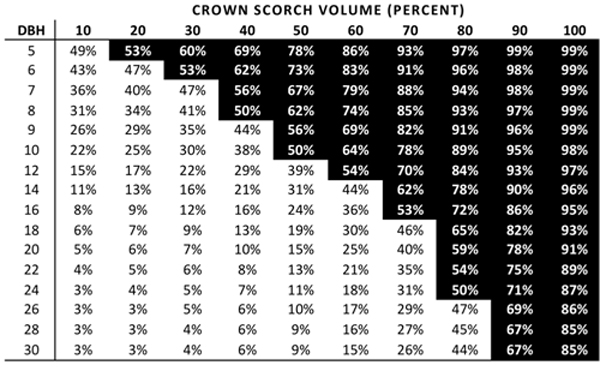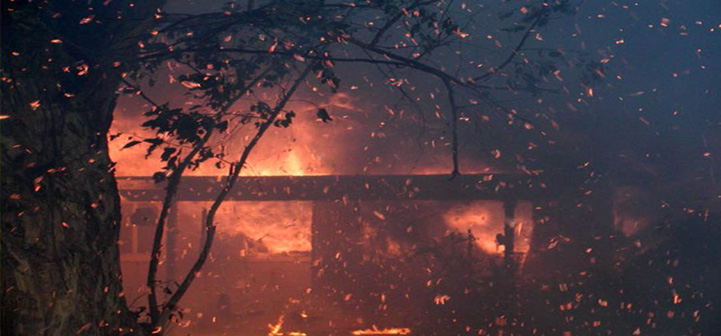Article Written by:
Yvonne Barkley, University of Idaho Extension, Moscow, ID and
David C. Powell, USDA Forest Service
Western larch, also called tamarack, is the largest of the American larches and is one of the few deciduous conifers. Occurring only in the Upper Columbia River Basin of North America, western larch can reach heights of 150-175 feet and commonly live to be hundreds of years old.
Long-lived and with few serious natural enemies, western larch is able to persist in forest stands until fire creates openings and new seedbeds, giving seedlings the opportunity to quickly occupy the site and grow rapidly.
Fire adaptations.
Western larch has thick bark with little resin content – at ground level the bark is often six inches thick on mature trees. This, combined with high, open canopies of low flammability foliage, a tolerance for defoliation, and deep root systems commonly ranks mature western larch as the most fire resistant conifer in the Northern Rockies.
Fire effects.
Mortality in conifers is greatly dependent on the duration of the fire as well as the thickness of the bark and the percent of canopy scorched. Western larch, with its three to six inch bark, survives most fires. Pole-sized trees, however, are able to only withstand low to moderate burns and seedlings and saplings are readily killed by fire.
Post-fire response.
Western larch has a better than average chance of individual trees surviving even the largest and most severe of fires. Post-fire, these survivors become seed trees and, when fires precede a good seed crop, provide rapid restocking on newly burned seedbeds.
Assessment.
There is no formula or standard set of characteristic to determine if a fire damaged tree will survive or not. Many variables, including site conditions, stand health, and fire intensity, play a role in the survival of individual trees. You can use the criteria below to give you a probability of mortality for individual trees.
1. Determine the condition of the cambium at the trunk, roots, and root collar. Do this by pealing back a section of bark in four places near the base of the trunk and under the duff layer (if significant burning occurred at the base of the tree). Examine the cambium layer below. If:
-
- 3-4 sites are pale, green, and moist; tree is currently alive.
- 2 sites are brown and dry; tree is currently in a marginal condition.
- 3-4 sites are brown and dry; tree is dead.
2. Estimate how much of the crown is scorched for an individual tree. Using Table 1 (below), determine the probability of fire-induced mortality for western larch. If the percent of crown scorch volume is in the white area, that gives the tree a 50% chance or greater of survival; if it is in the black, there is a 50% or greater chance of mortality.
For more information go to After the Burn: Assessing and Managing Your Forestland After a Wildfire. University of Idaho Extension, SB 78, Idaho Forest, Wildlife and Range Experiment Station, Moscow, ID.
Table 1: Probability of fire-induced mortality for western larch.


